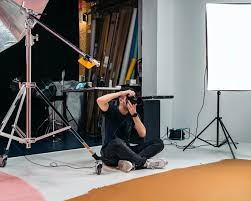The Art and Profession of Photographer: A Comprehensive Guide

Photographer, often hailed as the art of capturing moments, has evolved into a multifaceted profession and creative pursuit. From capturing breathtaking landscapes to documenting life’s most precious moments, photographers play a crucial role in preserving memories and shaping narratives. In this comprehensive guide, we’ll delve into the world of photography, exploring its history, various genres, equipment, techniques, and career opportunities.
Understanding Photography
Defining Photography
At its core, photography is the art and science of capturing light and recording it in a permanent medium, such as film or digital sensors. Through the lens of a camera, photographers freeze moments in time, immortalizing memories, emotions, and stories.
Historical Context
The history of photography dates back to the early 19th century when pioneers like Joseph Nicéphore Niépce and Louis Daguerre developed the first successful photographic processes. Since then, photography has undergone numerous technological advancements, revolutionizing the way we see and interpret the world around us.
The Evolution of Photography
Analog Photography
In the early days of photography, analog cameras and film were the primary tools used to capture images. Photographers relied on chemical processes to develop film negatives and produce prints, a laborious yet rewarding process that required skill and precision.
Digital Photography
The advent of digital technology revolutionized the photography industry, making it more accessible and versatile than ever before. Digital cameras replaced traditional film, offering photographers instant feedback, greater control over exposure and composition, and virtually limitless storage capacity.
Genres of Photography
Portrait Photography
Portrait photography focuses on capturing the essence of a person or group, highlighting their personality, emotions, and character. From formal studio portraits to candid snapshots, portrait photographers use various techniques to create compelling and visually appealing images.
Landscape Photography
Landscape photography celebrates the beauty of the natural world, capturing scenic vistas, majestic mountains, serene lakes, and breathtaking sunsets. Landscape photographers often venture into remote locations, braving the elements to capture the perfect shot.
Street Photography
Street photography documents everyday life in urban environments, capturing candid moments, street scenes, and cultural phenomena. Street photographers have a keen eye for composition, timing, and storytelling, often capturing the raw and unfiltered realities of city life.
Wildlife Photography
Wildlife photography explores the beauty and diversity of the animal kingdom, showcasing wildlife in its natural habitat. Wildlife photographers require patience, perseverance, and a deep understanding of animal behavior to capture elusive and captivating moments in the wild.
Fashion Photography
Fashion photography combines elements of art, style, and commerce, showcasing clothing, accessories, and lifestyle trends. Fashion photographers collaborate with designers, models, stylists, and makeup artists to create visually striking images that evoke emotion and inspiration.
Documentary Photography
Documentary photography tells stories and sheds light on social issues, cultural phenomena, and historical events. Documentary photographers serve as visual storytellers, using their images to raise awareness, provoke thought, and inspire change.
Equipment and Techniques
Cameras and Lenses
The choice of camera and lenses depends on the photographer’s preferences, budget, and intended use. From compact point-and-shoot cameras to professional DSLRs and mirrorless systems, photographers have a wide range of options to suit their needs.
Lighting
Lighting plays a crucial role in photography, influencing mood, atmosphere, and visual impact. Photographers use natural light, artificial light sources, reflectors, and modifiers to sculpt and control light, creating stunning images with depth and dimension.
Composition
Composition refers to the arrangement of visual elements within a photograph, including lines, shapes, colors, and textures. Photographers use principles such as the rule of thirds, leading lines, and symmetry to create balanced, harmonious, and visually appealing images.
Post-Processing
Post-processing involves editing and enhancing images using software such as Adobe Photoshop or Lightroom. Photographers can adjust exposure, contrast, color balance, and sharpness, as well as remove imperfections and apply creative effects to achieve their desired aesthetic.
Career Opportunities in Photography
Freelance Photography
Many photographers choose to work as freelancers, offering their services for hire on a project-by-project basis. Freelance photographers have the flexibility to set their own schedules, choose their clients, and pursue their creative passions while earning a living.
Commercial Photography
Commercial photographers work with businesses, brands, and advertising agencies to create images for marketing, advertising, and promotional purposes. From product photography to corporate portraits, commercial photographers play a vital role in shaping brand identities and driving sales.
Wedding and Event Photography
Wedding and event photographers capture the joy, romance, and excitement of special occasions such as weddings, birthdays, and corporate events. These photographers work closely with clients to document key moments and create lasting memories that will be cherished for years to come.
Photojournalism
Photojournalists document news events, social issues, and human-interest stories for newspapers, magazines, and online publications. They use their images to inform, educate, and inspire, shining a light on important issues and events happening around the world.
Fine Art Photography
Fine art photographers create images for artistic expression and personal interpretation, often showcasing their work in galleries, museums, and exhibitions. These photographers push the boundaries of creativity, experimenting with unconventional techniques and concepts to create thought-provoking and visually stunning images.
Conclusion
Photography is more than just a profession; it’s a passion, a form of creative expression, and a powerful means of communication. Whether you’re capturing fleeting moments or documenting the world around you, photography allows you to see the beauty in the ordinary and the extraordinary. So grab your camera, explore your surroundings, and let your imagination soar.









